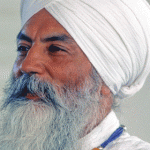If you haven’t been getting more involved in politics lately…

AcroYoga teacher Deven Sisler says it’s time and explains how the yogic principles of satya and ahimsa compel yogis to engage.
If you haven’t been getting more involved in politics lately, AcroYoga teacher Deven Sisler says it’s time, in accordance with the yogic principles of satya and ahimsa.
“The world feels really divisive right now, and yoga is the opposite of that,” she says. “[Politics is] everywhere at this moment—including our schools and homes—and yoga can’t be an escape. It should be a foundation from which we can say, ‘How do I talk to my family and friends [who] have opposite views from [mine]?’ ‘How do I listen without becoming reactive?’ That’s where yoga has been huge for me.”
Here, Sisler explains why every yogi should get involved in politics, according to the first two yamas, ahimsa and satya, and offers a pose and meditation to illustrate how these key yogic “rules” behoove us to get involved in politics.
Ahimsa
In The Secret Power of Yoga: A Woman’s Guide to the Heart and Spirit of the Yoga Sutras, author Nischala Joy Devi offers the following translation of the first yama, ahimsa (nonviolence): “Embracing reverence and love for all, we experience oneness.” This love must begin with ourselves, and it takes an amazing amount of courage. I practice ahimsa in the lovingkindness and acceptance I evoke for myself on my mat. For example, I can’t get into full splits right now, and that’s OK. Instead of focusing on an external goal, I focus my practice on the support I need to practice my version of the pose comfortably.
Similarly, if I hear an opinion that I disagree with, I practice ahimsa by engaging in respectful conversation, active listening, and asking questions, rather than forcing someone else to have the opinion that I think they should have. Yelling at someone or getting into a Facebook rant is unlikely to change anyone else’s mind on a hot topic, but discovering what is beneath their beliefs, could.

Pose: Humble Warrior
In Humble Warrior, we must hold strong in the shape and fortitude of our legs, while discovering how open the upper body is. The pose cannot be forced and may reveal unexpected tightness or holding that only compassionate patience can unlock.
How-to
Take the feet into a Warrior I stance, with the front knee bent over your ankle, while the back leg is straight. Lift your arms behind you to interlace fingers. Draw the heels of the hands toward each other. Bow your head to the inside of your front knee, as your upper arms squeeze together and your hands lift toward the sky. Alternatively, if the interlace is unavailable, hold a strap between the hands.
Meditation
“I bow to my heart and lovingkindness in my life.”
Satya
Satya, the second yama, refers to truthfulness. As Deborah Adele, author of The Yamas & Niyamas: Exploring Yoga’s Ethical Practice Paperback, writes: “[It] demands integrity to life and to our own true self that is more than not telling a simple lie. When we are real rather than nice… when we choose growth over needing to belong, when we choose fluidity over rigidity, we begin to understand the deeper dynamics of truthfulness.” Satya sits in the seat of ahimsa, because it can be sharp and dangerous otherwise.
I practice satya through my study of Nonviolent Communication, a field developed by the late Marshall Rosenberg, where I learned that my job is not to say what I think someone wants to hear, but my simple truth with as much compassion as needed. And if I say something that somebody else might not like, I’m not responsible for their reaction.
To speak your truth, go to your local town hall meetings to meet your representatives on the local, state, and federal levels, call or write to your representatives, and tell them what you think. Listen to the issues and contribute your voice.

Pose: Warrior II
Warrior II demands strength in the whole body and constantly reveals potential for more depth and more precision, just as our study of satya does. It can be difficult to stay, breathe, and hold, but each time we return to the pose, we cultivate more clarity, endurance, and equanimity in the face of discomfort. We can take these qualities out into the rest of the world. Learn how to do Warrior II.
Meditation:
“I stand tall for those I love.”





















































